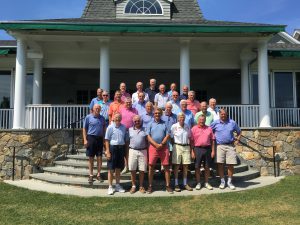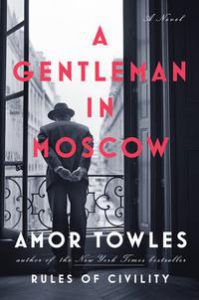 A New York Times bestseller “The same gorgeous, layered richness that marked Towles’ debut, Rules of Civility, shapes [A Gentleman in Moscow]” – Entertainment Weekly “Elegant… as lavishly filigreed as a Fabergé egg” – O, the Oprah Magazine He can’t leave his hotel. You won’t want to. From the New York Times bestselling author of Rules of Civility—a transporting novel about a man who is ordered to spend the rest of his life inside a luxury hotel In 1922, Count Alexander Rostov is deemed an unrepentant aristocrat by a Bolshevik tribunal, and is sentenced to house arrest in the Metropol, a grand hotel across the street from the Kremlin. Rostov, an indomitable man of erudition and wit, has never worked a day in his life, and must now live in an attic room while some of the most tumultuous decades in Russian history are unfolding outside the hotel’s doors. Unexpectedly, his reduced circumstances provide him entry into a much larger world of emotional discovery. Brimming with humor, a glittering cast of characters, and one beautifully rendered scene after another, this singular novel casts a spell as it relates the count’s endeavor to gain a deeper understanding of what it means to be a man of purpose. “And the intrigue! … [A Gentleman in Moscow] is laced with sparkling threads (they will tie up) and tokens (they will matter): special keys, secret compartments, gold coins, vials of coveted liquid, old-fashioned pistols, duels and scars, hidden assignations (discreet and smoky), stolen passports, a ruby necklace, mysterious letters on elegant hotel stationery… a luscious stage set, backdrop for a downright Casablanca-like drama.” – The San Francisco Chronicle From the Hardcover edition
A New York Times bestseller “The same gorgeous, layered richness that marked Towles’ debut, Rules of Civility, shapes [A Gentleman in Moscow]” – Entertainment Weekly “Elegant… as lavishly filigreed as a Fabergé egg” – O, the Oprah Magazine He can’t leave his hotel. You won’t want to. From the New York Times bestselling author of Rules of Civility—a transporting novel about a man who is ordered to spend the rest of his life inside a luxury hotel In 1922, Count Alexander Rostov is deemed an unrepentant aristocrat by a Bolshevik tribunal, and is sentenced to house arrest in the Metropol, a grand hotel across the street from the Kremlin. Rostov, an indomitable man of erudition and wit, has never worked a day in his life, and must now live in an attic room while some of the most tumultuous decades in Russian history are unfolding outside the hotel’s doors. Unexpectedly, his reduced circumstances provide him entry into a much larger world of emotional discovery. Brimming with humor, a glittering cast of characters, and one beautifully rendered scene after another, this singular novel casts a spell as it relates the count’s endeavor to gain a deeper understanding of what it means to be a man of purpose. “And the intrigue! … [A Gentleman in Moscow] is laced with sparkling threads (they will tie up) and tokens (they will matter): special keys, secret compartments, gold coins, vials of coveted liquid, old-fashioned pistols, duels and scars, hidden assignations (discreet and smoky), stolen passports, a ruby necklace, mysterious letters on elegant hotel stationery… a luscious stage set, backdrop for a downright Casablanca-like drama.” – The San Francisco Chronicle From the Hardcover edition
Here is a video tour of the Hotel Metropol (courtesy of Charles Salmans)
https://www.youtube.com/watch?v=NPkLFmUiTjo
An interview with the author by the WSJ:
https://www.youtube.com/watch?v=mUXlagGIH18
Amor Towles’ website has some interesting discussion:
http://www.amortowles.com/
Latvian Stew: Mentioned on page 97
The author points to this recipe (there are others).
PORK STEW WITH DRIED APRICOTS AND PRUNES
(Svinina v Kislo-Sladkom Souse)
SERVES 6 — 8
As the apricots and prunes cook, some of them will fall apart and thicken the sauce. Serve this stew accompanied by boiled potatoes, buttered and garnished with chopped parsley, if you like.
3 lbs. boneless pork shoulder,
trimmed and cut into 1″ pieces
Salt and freshly ground black pepper
6 tbsp. vegetable oil
6 carrots, peeled, trimmed, and
sliced crosswise
4 tbsp. tomato paste
1 cup dried apricots
1 lb. white boiling onions, peeled,
each cut into 6 wedges
1 cup pitted prunes
1. Season pork with salt and pepper. Heat 3 tbsp. of the oil in a large heavy-bottomed pot over medium-high heat. Add pork and cook, stirring occasionally, until meat releases its juices and is no longer pink all over, about 5 minutes. Add carrots and cook until slightly tender, about 5 minutes. Stir in tomato paste and 5 cups of water, then add apricots. Bring to a boil, reduce heat to medium-low, and gently simmer, uncovered, for 45 minutes.
Another recipe that looks good from Epicurious:
https://www.epicurious.com/recipes/food/views/pork-stew-with-apricots-and-prunes-2559
nbsp;
On page 133 The Count quickly notes that a number, 1,173 is not prime by using the Divisibility by 3 Theorem. That is if the sum of the digits of a number are divisible by 3 (or 9) then the number is divisible by three (or 9), hence, not prime. The book’s example: 1+1+7+3 =12 is divisible by 3 so, according to the theorem, 1,173 is divisible by 3.
Here is an informal proof.
Suppose that you have a four-digit number N that is written abcd. and a+b+c+d is divisible by 3. Then
N=1000a+100b+10c+d=(999+1)a+(99+1)b+(9+1)c+d=(999a+99b+9c)+(a+b+c+d)=3(333a+33b+3c)+(a+b+c+d)
so when you divide N by 3, you’ll get
333a+33b+3c+(a+b+c+d) /3. But since a+b+c+d was divisible by 3, the 3 in the denominator cancels out and the remainder is an integer.. Hence N is divisible by 3 and not prime.
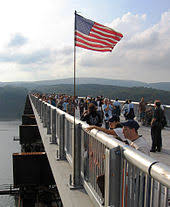 Happy Wanderers — Walkway Over the Hudson River – 21 September, 2017
Happy Wanderers — Walkway Over the Hudson River – 21 September, 2017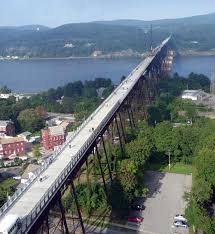 Driving directions will be provided for each car. For GPS users, the address of the parking area for the Walkway is 61 Parker Avenue, Poughkeepsie, NY, 12601.
Driving directions will be provided for each car. For GPS users, the address of the parking area for the Walkway is 61 Parker Avenue, Poughkeepsie, NY, 12601.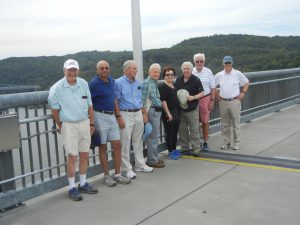
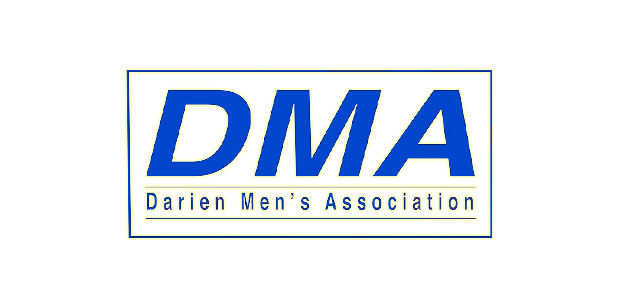

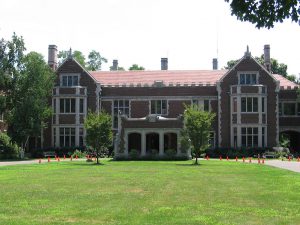 Following this hike we will take a short drive to the second property,the 80 acre Waveney Park, which is owned by the Town of New Canaan. Here the trail loop is about 1.5 miles and serenely beautiful.
Following this hike we will take a short drive to the second property,the 80 acre Waveney Park, which is owned by the Town of New Canaan. Here the trail loop is about 1.5 miles and serenely beautiful.
 A New York Times bestseller “The same gorgeous, layered richness that marked Towles’ debut, Rules of Civility, shapes [A Gentleman in Moscow]” – Entertainment Weekly “Elegant… as lavishly filigreed as a Fabergé egg” – O, the Oprah Magazine He can’t leave his hotel. You won’t want to. From the New York Times bestselling author of Rules of Civility—a transporting novel about a man who is ordered to spend the rest of his life inside a luxury hotel In 1922, Count Alexander Rostov is deemed an unrepentant aristocrat by a Bolshevik tribunal, and is sentenced to house arrest in the Metropol, a grand hotel across the street from the Kremlin. Rostov, an indomitable man of erudition and wit, has never worked a day in his life, and must now live in an attic room while some of the most tumultuous decades in Russian history are unfolding outside the hotel’s doors. Unexpectedly, his reduced circumstances provide him entry into a much larger world of emotional discovery. Brimming with humor, a glittering cast of characters, and one beautifully rendered scene after another, this singular novel casts a spell as it relates the count’s endeavor to gain a deeper understanding of what it means to be a man of purpose. “And the intrigue! … [A Gentleman in Moscow] is laced with sparkling threads (they will tie up) and tokens (they will matter): special keys, secret compartments, gold coins, vials of coveted liquid, old-fashioned pistols, duels and scars, hidden assignations (discreet and smoky), stolen passports, a ruby necklace, mysterious letters on elegant hotel stationery… a luscious stage set, backdrop for a downright Casablanca-like drama.” – The San Francisco Chronicle From the Hardcover edition
A New York Times bestseller “The same gorgeous, layered richness that marked Towles’ debut, Rules of Civility, shapes [A Gentleman in Moscow]” – Entertainment Weekly “Elegant… as lavishly filigreed as a Fabergé egg” – O, the Oprah Magazine He can’t leave his hotel. You won’t want to. From the New York Times bestselling author of Rules of Civility—a transporting novel about a man who is ordered to spend the rest of his life inside a luxury hotel In 1922, Count Alexander Rostov is deemed an unrepentant aristocrat by a Bolshevik tribunal, and is sentenced to house arrest in the Metropol, a grand hotel across the street from the Kremlin. Rostov, an indomitable man of erudition and wit, has never worked a day in his life, and must now live in an attic room while some of the most tumultuous decades in Russian history are unfolding outside the hotel’s doors. Unexpectedly, his reduced circumstances provide him entry into a much larger world of emotional discovery. Brimming with humor, a glittering cast of characters, and one beautifully rendered scene after another, this singular novel casts a spell as it relates the count’s endeavor to gain a deeper understanding of what it means to be a man of purpose. “And the intrigue! … [A Gentleman in Moscow] is laced with sparkling threads (they will tie up) and tokens (they will matter): special keys, secret compartments, gold coins, vials of coveted liquid, old-fashioned pistols, duels and scars, hidden assignations (discreet and smoky), stolen passports, a ruby necklace, mysterious letters on elegant hotel stationery… a luscious stage set, backdrop for a downright Casablanca-like drama.” – The San Francisco Chronicle From the Hardcover edition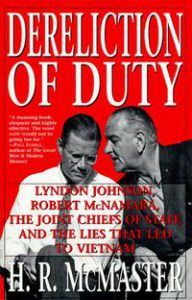 From respected Lieutenant General and Trump Administration National Security Adviser H. R. McMaster, an authoritative, highly critical analysis of the arrogance, deception, and controversial decisions at the highest level of government that led to America’s involvement in the Vietnam War. “The war in Vietnam was not lost in the field, nor was it lost on the front pages of the New York Times or the college campuses. It was lost in Washington, D.C.” —H. R. McMaster (from the Conclusion) Dereliction Of Duty is a stunning analysis of how and why the United States became involved in an all-out and disastrous war in Southeast Asia. Fully and convincingly researched, based on transcripts and personal accounts of crucial meetings, confrontations and decisions, it is the only book that fully re-creates what happened and why. McMaster pinpoints the policies and decisions that got the United States into the morass and reveals who made these decisions and the motives behind them, disproving the published theories of other historians and excuses of the participants. A page-turning narrative, Dereliction Of Duty focuses on a fascinating cast of characters: President Lyndon Johnson, Robert McNamara, General Maxwell Taylor, McGeorge Bundy and other top aides who deliberately deceived the Joint Chiefs of Staff, the U.S. Congress and the American public. McMaster’s only book, Dereliction of Duty is an explosive and authoritative new look at the controversy concerning the United States involvement in Vietnam
From respected Lieutenant General and Trump Administration National Security Adviser H. R. McMaster, an authoritative, highly critical analysis of the arrogance, deception, and controversial decisions at the highest level of government that led to America’s involvement in the Vietnam War. “The war in Vietnam was not lost in the field, nor was it lost on the front pages of the New York Times or the college campuses. It was lost in Washington, D.C.” —H. R. McMaster (from the Conclusion) Dereliction Of Duty is a stunning analysis of how and why the United States became involved in an all-out and disastrous war in Southeast Asia. Fully and convincingly researched, based on transcripts and personal accounts of crucial meetings, confrontations and decisions, it is the only book that fully re-creates what happened and why. McMaster pinpoints the policies and decisions that got the United States into the morass and reveals who made these decisions and the motives behind them, disproving the published theories of other historians and excuses of the participants. A page-turning narrative, Dereliction Of Duty focuses on a fascinating cast of characters: President Lyndon Johnson, Robert McNamara, General Maxwell Taylor, McGeorge Bundy and other top aides who deliberately deceived the Joint Chiefs of Staff, the U.S. Congress and the American public. McMaster’s only book, Dereliction of Duty is an explosive and authoritative new look at the controversy concerning the United States involvement in Vietnam Meticulously researched and beautifully written, the true story of a Japanese American family that found itself on opposite sides during World War II—an epic tale of family, separation, divided loyalties, love, reconciliation, loss, and redemption—this is a riveting chronicle of U.S.–Japan relations and the Japanese experience in America.
Meticulously researched and beautifully written, the true story of a Japanese American family that found itself on opposite sides during World War II—an epic tale of family, separation, divided loyalties, love, reconciliation, loss, and redemption—this is a riveting chronicle of U.S.–Japan relations and the Japanese experience in America.
 From New Yorker staff writer David Grann, #1 New York Times best-selling author of The Lost City of Z, a twisting, haunting true-life murder mystery about one of the most monstrous crimes in American history In the 1920s, the richest people per capita in the world were members of the Osage Indian nation in Oklahoma. After oil was discovered beneath their land, they rode in chauffeured automobiles, built mansions, and sent their children to study in Europe. Then, one by one, the Osage began to be killed off. The family of an Osage woman, Mollie Burkhart, became a prime target. Her relatives were shot and poisoned. And it was just the beginning, as more and more members of the tribe began to die under mysterious circumstances. In this last remnant of the Wild West—where oilmen like J. P. Getty made their fortunes and where desperadoes like Al Spencer, the “Phantom Terror,” roamed—many of those who dared to investigate the killings were themselves murdered. As the death toll climbed to more than twenty-four, the FBI took up the case. It was one of the organization’s first major homicide investigations and the bureau badly bungled the case. In desperation, the young director, J. Edgar Hoover, turned to a former Texas Ranger named Tom White to unravel the mystery. White put together an undercover team, including one of the only American Indian agents in the bureau. The agents infiltrated the region, struggling to adopt the latest techniques of detection. Together with the Osage they began to expose one of the most chilling conspiracies in American history. In Killers of the Flower Moon, David Grann revisits a shocking series of crimes in which dozens of people were murdered in cold blood. Based on years of research and startling new evidence, the book is a masterpiece of narrative nonfiction, as each step in the investigation reveals a series of sinister secrets and reversals. But more than that, it is a searing indictment of the callousness and prejudice toward American Indians that allowed the murderers to operate with impunity for so long. Killers of the Flower Moon is utterly compelling, but also emotionally devastating.
From New Yorker staff writer David Grann, #1 New York Times best-selling author of The Lost City of Z, a twisting, haunting true-life murder mystery about one of the most monstrous crimes in American history In the 1920s, the richest people per capita in the world were members of the Osage Indian nation in Oklahoma. After oil was discovered beneath their land, they rode in chauffeured automobiles, built mansions, and sent their children to study in Europe. Then, one by one, the Osage began to be killed off. The family of an Osage woman, Mollie Burkhart, became a prime target. Her relatives were shot and poisoned. And it was just the beginning, as more and more members of the tribe began to die under mysterious circumstances. In this last remnant of the Wild West—where oilmen like J. P. Getty made their fortunes and where desperadoes like Al Spencer, the “Phantom Terror,” roamed—many of those who dared to investigate the killings were themselves murdered. As the death toll climbed to more than twenty-four, the FBI took up the case. It was one of the organization’s first major homicide investigations and the bureau badly bungled the case. In desperation, the young director, J. Edgar Hoover, turned to a former Texas Ranger named Tom White to unravel the mystery. White put together an undercover team, including one of the only American Indian agents in the bureau. The agents infiltrated the region, struggling to adopt the latest techniques of detection. Together with the Osage they began to expose one of the most chilling conspiracies in American history. In Killers of the Flower Moon, David Grann revisits a shocking series of crimes in which dozens of people were murdered in cold blood. Based on years of research and startling new evidence, the book is a masterpiece of narrative nonfiction, as each step in the investigation reveals a series of sinister secrets and reversals. But more than that, it is a searing indictment of the callousness and prejudice toward American Indians that allowed the murderers to operate with impunity for so long. Killers of the Flower Moon is utterly compelling, but also emotionally devastating.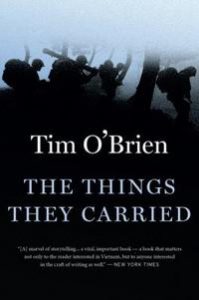 A classic work of American literature that has not stopped changing minds and lives since it burst onto the literary scene, The Things They Carriedis a ground-breaking meditation on war, memory, imagination, and the redemptive power of storytelling. The Things They Carrieddepicts the men of Alpha Company: Jimmy Cross, Henry Dobbins, Rat Kiley, Mitchell Sanders, Norman Bowker, Kiowa, and the character Tim O’Brien, who has survived his tour in Vietnam to become a father and writer at the age of forty-three. Taught everywhere from high school classrooms to graduate seminars in creative writing it has become required reading for any American and continues to challenge readers in their perceptions of fact and fiction, war and peace, courage and fear and longing. The Things They Carried won France’s prestigious Prix du Meilleur Livre Etranger and the Chicago Tribune Heartland Prize; it was also a finalist for the Pulitzer Prize and the National Book Critics Circle Award., A classic, life-changing meditation on war, memory, imagination, and the redemptive power of storytelling, with more than two-million copies in print Depicting the men of Alpha Company-Jimmy Cross, Henry Dobbins, Rat Kiley, Mitchell Sanders, Norman Bowker, Kiowa, and the character Tim O’Brien, who survived his tour in Vietnam to become a father and writer at the age of forty-three-the stories in The Things They Carried opened our eyes to the nature of war in a way we will never forget. It is taught everywhere, from high school classrooms to graduate seminars in creative writing, and in the decades since its publication it has never failed to challenge our perceptions of fact and fiction, war and peace, and courage, longing, and fear., Tim O’Brien’s modern classic that reset our understanding of fiction, nonfiction, and the way they can work together, as well as our understanding of the Vietnam war and its consequences.
A classic work of American literature that has not stopped changing minds and lives since it burst onto the literary scene, The Things They Carriedis a ground-breaking meditation on war, memory, imagination, and the redemptive power of storytelling. The Things They Carrieddepicts the men of Alpha Company: Jimmy Cross, Henry Dobbins, Rat Kiley, Mitchell Sanders, Norman Bowker, Kiowa, and the character Tim O’Brien, who has survived his tour in Vietnam to become a father and writer at the age of forty-three. Taught everywhere from high school classrooms to graduate seminars in creative writing it has become required reading for any American and continues to challenge readers in their perceptions of fact and fiction, war and peace, courage and fear and longing. The Things They Carried won France’s prestigious Prix du Meilleur Livre Etranger and the Chicago Tribune Heartland Prize; it was also a finalist for the Pulitzer Prize and the National Book Critics Circle Award., A classic, life-changing meditation on war, memory, imagination, and the redemptive power of storytelling, with more than two-million copies in print Depicting the men of Alpha Company-Jimmy Cross, Henry Dobbins, Rat Kiley, Mitchell Sanders, Norman Bowker, Kiowa, and the character Tim O’Brien, who survived his tour in Vietnam to become a father and writer at the age of forty-three-the stories in The Things They Carried opened our eyes to the nature of war in a way we will never forget. It is taught everywhere, from high school classrooms to graduate seminars in creative writing, and in the decades since its publication it has never failed to challenge our perceptions of fact and fiction, war and peace, and courage, longing, and fear., Tim O’Brien’s modern classic that reset our understanding of fiction, nonfiction, and the way they can work together, as well as our understanding of the Vietnam war and its consequences.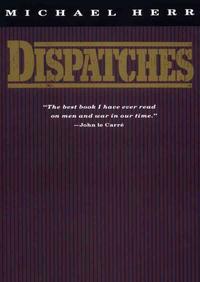 “Dispatches” by Michael Herr. According to John Wolcott, who served in Viet Nam, this accurately captures the life of a grunt. One of the greatest examples of war journalism ever written, Michael Herr’s clearheaded yet unsparing retellings of the day-to-day events in Vietnam take on the force of poetry, finding clarity in one of the most incomprehensible events in our modern era. A National Book Critics Circle finalist and highly acclaimed upon its publication, Dispatches still retains its resonance as America finds itself amidst another military quagmire.
“Dispatches” by Michael Herr. According to John Wolcott, who served in Viet Nam, this accurately captures the life of a grunt. One of the greatest examples of war journalism ever written, Michael Herr’s clearheaded yet unsparing retellings of the day-to-day events in Vietnam take on the force of poetry, finding clarity in one of the most incomprehensible events in our modern era. A National Book Critics Circle finalist and highly acclaimed upon its publication, Dispatches still retains its resonance as America finds itself amidst another military quagmire.  “Heart of Darkness” by Joseph Conrad. Charles Marlow is a steamboat captain on the River Thames near Gravesend England. He and his crew work for an ivory trading company. One day he recounts to his fellow crew the story of his life and how he became a captain for the steam boat company. The focus of his story involves the journey Marlow undertook to the outer reaches of the company’s operations. Here he tells of his wild encounters with Mr. Kurtz, a man with a great reputation for bringing in the most ivory for the company. Kurtz is widely respected by the natives, yet Marlow has some differing opinions as he struggles to understand Kurtz’s way of life, while uncovering secrets about the strange way Kurtz conducts his business.
“Heart of Darkness” by Joseph Conrad. Charles Marlow is a steamboat captain on the River Thames near Gravesend England. He and his crew work for an ivory trading company. One day he recounts to his fellow crew the story of his life and how he became a captain for the steam boat company. The focus of his story involves the journey Marlow undertook to the outer reaches of the company’s operations. Here he tells of his wild encounters with Mr. Kurtz, a man with a great reputation for bringing in the most ivory for the company. Kurtz is widely respected by the natives, yet Marlow has some differing opinions as he struggles to understand Kurtz’s way of life, while uncovering secrets about the strange way Kurtz conducts his business.

